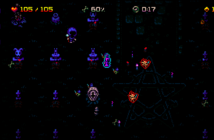By Adriana Rodriguez, Contributing writer
Most of Halloween traditions can be traced back to Gaelic roots from Ireland. The holiday originates from ancient Celtic harvest festivals, more specifically known as Samhain. Samhain represented the end of the fall harvest season, and the beginning of the darker half of the year, also known as winter.
Samhain took place between the Autumn Equinox and the Winter Solstice, a time which many believed weakened the boundary between the world of the living and the world of the dead, thus allowing spirits to cross more easily from the latter into the former.
The spirits were believed to bring the living back into the afterlife with them once they returned, so people began to wear disguises as a way of hiding and/or blending in with the spirits. Thus began the three-day observance of Allhollowtide; a time of remembering the dead.
In the rural areas of modern Ireland, bonfires are lit as children go trick-or-treating. Then, they attend parties with entertaining games such as “Snap-Apple,” an activity in which an apple is tied on a string, hung from a doorframe or tree, and players attempt to bite it.
There are also treasure hunts and card games. There is a famous one where cards are faced down on a table while candy and coins are hidden beneath; once a child chooses a card, they get to keep the prize underneath the card.
While games are exciting for the holiday, no Halloween party is complete without holiday food.
One of Ireland’s traditional Halloween food is a type of fruitcake called Barnbrack. People bake a muslin-wrapped treat inside of the fruitcake, and use it to foretell the future of the people who eat it. If a ring is found, then the person is soon to be wed. If a straw is discovered, then the person could expect a prosperous year.
Other countries around the world share a similar origin story for their version of Halloween. In Mexico, Halloween is a three-day celebration of the dead beginning from Oct.31 to Nov. 2. Although Halloween officially begins in Oct. 31, it is not until Nov. 1 that spirits are believed to be able to cross into the world of the living.
This day is known as “Dia de los Inocentes,” or “Day of Children and All Saints Day.” This is when the gates of Heaven open at the midnight hour of Oct. 31 and the souls of the children in the afterlife are able to visit their families for 24 hours. The souls of the adults can also visit the following day which is called “All Souls Day,” (also known as Day of the Dead).
Throughout the time of celebration, people would build altars in their homes for their deceased ancestors and decorate them with fruits, Cempasuchil flowers, candies, water, pictures, and even the favorite foods of the deceased.
There would also be home feasts with “Bread of the Dead.” The bread would have sugar skeletons or object of death motifs inside with the intention of being found by the person eating it. The gift inside becomes more prized if it has the person’s name on it.
On Nov. 2, families would hold a picnic at the gravesites of their family members and decorate the tomb. Villages would hold parades with people dancing dressed as skeletons. Sometimes, a living person would be placed inside of a coffin which is then paraded around with people throwing fruits, flowers, and/ or candies into the casket.
Other countries such as England and France have not celebrated Halloween until recently.
In the past, people in the rural areas of England used to place turnip lanterns on their gateposts as a way of protecting their homes from malevolent spirits. Children would create “Punkies,” carved beetroots (large beets), and carry them through the streets while singing the “Punkie Night Song.” They would then knock on doors and ask for money.
English people would also create bonfires and toss in things like stones, nuts, and/or vegetables to frighten spirits and predict the future. For example, if a pebble thrown at night is not visible in the following morning, then the person would not live another year. If a nut thrown in by a couple exploded, then they could expect a strained marriage.
In the Halloween of 1517, the country’s Catholic Church underwent a Protestant Reformation under King Martin Luther. This put a stop to the celebration of Halloween.
Guy Fawkes Day, a day that commemorates the execution of famous English traitor and fall guy for the Catholics’ plot to bomb the Protestant English Parliament, Guy Fawkes, replaced Halloween. It is not until recent years that Halloween began to be celebrated again in a more Americanized way. Guy Fawkes Day was then moved to Nov. 5.
Many countries have only recently started to celebrate Halloween due to the commercialism of the holiday by American companies like Coca-Cola and Disney.
“What is very different from the United States is the fact that few people celebrate Halloween or even think about it. This means that many people do not plan to buy candy, and it often happens that these people, having nothing, give money to children so that they can buy candy themselves,” said Jayana Pasteur, a sophomore majoring in digital communication.
Although not every country celebrates Halloween, they have their own festivities during the fall season. Such countries include China with their Ghost Festival, Japan and their Obon Festival, Korea with their Chuseok Festival, and many more. But they are all commemorations of the dead.
“Instead of Halloween, we pay more attention to Epiphany on Jan. 6,” Pasteur said.
Epiphany is a tradition where families buy one or more pies with a small figurine inside them. The principle is simple: one person will cut the pie in several parts and each person will choose their part. The winner is the one who chooses the part containing the figurine in it.
Pasteur said, “This person will then have the opportunity to wear a paper crown throughout the day signifying that he is the “king” or the one who found the figurine.”
Although their practices of celebration may differ, all festivities seem to have a special food prepared for their celebrations.
“Halloween is getting more popular but we celebrate something called Fastelavn,” said EmmaKatrine Bjoernholdt, an sophomore majoring in psychology.
Fastelavn, which is a carnival celebrated on the Sunday or Monday before Ash Wednesday, is a holiday based on the Roman Catholic tradition of celebrating the days before Lent. It is a Scandinavian tradition where people eat fastelavnsboller, a cake with jam in the middle, and drink hot chocolate or coffee.
“We celebrate both, but Fastelavn is celebrated mostly by the population, and the kids go trick-or-treat as well,” Bjoernhold added.
Both Pasteur and Bjoernholdt have declared their intentions to celebrate Halloween the American way this year.
Halloween might have originated in western societies, but it has now begun to be celebrated with much enthusiasm all around the world. It is only gaining more popularity as time passes.





